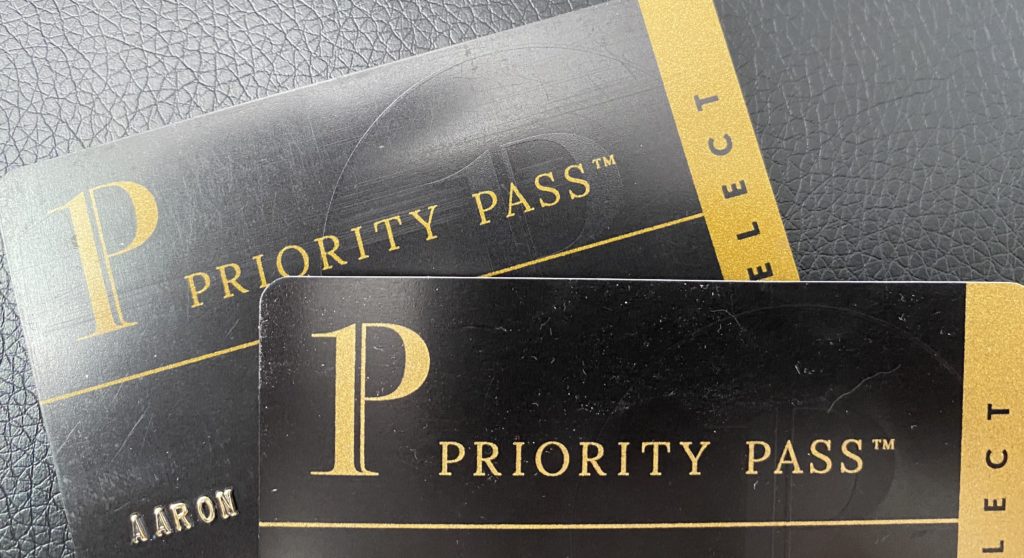Chase ultimate rewards Guide

By Aaron Anderson
A Simple Guide to Chase Ultimate Rewards
Earning Chase ultimate rewards points allows you to have a lot of flexibility when it comes to redeeming your points for maximum value. This all depends on your travel or non-travel goals. There are three main ways to redeem your ultimate rewards points:
- Redeem for cash or gifts
- Redeem for travel on the Chase travel portal
- Transfer points to different Travel partners
Redeeming for cash or gifts
When redeeming for cash or gifts, your chase ultimate rewards points are worth 1 cent per point upon redeeming. That’s pretty good value, but you can get even more value out of your points when you either redeem for travel through Chase or transfer your points to different travel partners.
Redeem through chase travel portal
When redeeming points for travel through the Chase travel portal, your points can be valued at different rates depending on which card you have:
Chase Sapphire Reserve: 1.5 cents per point
Chase Sapphire Preferred: 1.25 cents per point
Chase Ink Business Preferred: 1.25 cents per point
Chase Freedom or Freedom Unlimited: 1 cent per point
The beautiful thing about the Chase program, is if you have multiple Chase cards, you can transfer points between different accounts. For example, let’s assume that I have BOTH the Chase Sapphire Reserve card and the Chase Ink Business Preferred card. If I have earned 100,000 Chase ultimate rewards points with my Chase Ink Business Preferred card, I can transfer those 100,000 points to my Chase Sapphire Reserve account, which gains me an immediate 25% increase on my points if I redeem my points through the Chase travel portal. Not bad, right? This program is flexible! When I took my family to Maui, we used Chase points to book our flights through the Chase travel portal. We booked through Chase because it cost us less points to book through their portal rather than transferring to partner airlines. The amount of points you use depends on the going rate of the flights at that time. If a rountrip flight to Maui costs $500 today, then you will pay 50,000 Chase UR points (or if you have the Reserve card, you will only need 33,333 points to book that same flight). If a rountrip flight to Maui costs $300 in a month from now, then you will have to pay 30,000 Chase UR points (or if you have the Reserve card, you will only need 20,000 points. In most cases, you won’t be able to find a deal that good when you transfer your points to airline partners.

My little boy is always excited to be flying.

Booked two nights with Chase UR points and stayed in a 2-Bedroom villa at the Westin Nanea.

My kids getting their wings from the United pilots. Flying home from Maui using Chase UR points.
Transfer Points to Travel Partners
Here is a list of Chase travel partners. You can transfer ultimate rewards points at a 1:1 ratio for each partner.
Airlines:
- Aer Lingus Aerclub
- Air France/KLM Flying Blue
- British Airways
- Emirates Skyward
- Iberia Plus
- Jetblue TrueBlue
- Singapore Airlines KrisFlyer
- Southwest Airlines Rapid Rewards
- United Airlines Mileage Plus
- Virgin Atlantic Flying Club





The cool thing about Airlines, is that you’re not limited to just this list of Airlines. You can book flights with any of the airline’s partners within its alliance program. For example, you can book Lufthansa first class with United Airline miles or book Qatar qsuites using British Airways avios.
Hotels:
- World of Hyatt
- IHG Rewards Club
- Marriott Bonvoy

Kimpton Taconic Hotel; Manchester VT

Kimpton is part of the IHG rewards Club

Marriott Residence Inn Manhattan/Central Park

Our corner room view from the Marriott Residence Inn
With some programs, depending on how you do it, you can gain greater value within seconds of transferring; meaning that some partner points or miles are worth more than Chase UR points, depending on how you redeem them. Transferring Chase UR points to World of Hyatt can be very beneficial in maximizing value. On the other hand, in most cases, transferring Chase UR points to Marriott or IHG won’t be beneficial in maximizing your points value. The major benefit when transferring to Marriott is that you can get a 5th night free benefit when you book with points and you hold Marriott Silver status or higher. You can hold Marriott Silver status just by holding one of their co-branded credit cards.
Let’s break down some of the cards within the Chase familiy
Chase Sapphire Reserve
Bonus: You will earn 50,000 Chase ultimate rewards points after you spend $4,000 within the first three months of having your card.
Annual Fee: $550
The Chase Sapphire Reserve card was one of my first travel credit cards. I love this card because it’s a card that keeps on giving year after year. Personally, I am always going after the sign up bonuses, but this card has some worthy benefits that will incentivize you to keep the card year in and year out. The card comes with a high annual fee of $550, but it’s worth noting all of the pros and cons below so you can make a decision if this card is right for you or not.
Pros:
- Large sign up bonus (50,000 points)
- Get 50% more value when redeeming points through the Chase travel portal
- $300 annual travel credit to reimburse for travel expenses charged to your card
- Earn 3x points on dining and travel expenses
- 10x points on Lyft rides
- No foreign transaction fees
- Comes with Priority Pass membership, which gives you access to 1,000+ airport lounges world-wide
- $100 application fee credit for Global Entry or TSA precheck
- Complimentary Door Dash subscription, which gets you waived delivery fees on orders of $12 or more
- One year complimentary Lyft Pink (which would otherwise cost $19.99/month)
- Visa infinite perks
- It’s a METAL card, how cool is that?

Las Vegas McCarran Airport is my home airport. The Club Las is where I go before flights to eat food and relax.

Complimentary food before a flight

Priority Pass membership comes FREE with the Chase Sapphire Reserve card.

The Korean Air lounge in LAX airport is part of Priority Pass
Cons
- High Annual fee
- You need EXCELLENT credit to get approved for the card (720 and above)
- You cannot have both the Chase Sapphire Reserve AND the Chase Sapphire Preferred at the same time.
Chase Sapphire Preferred
Bonus: 60,000 Chase ultimate rewards points after you spend $4,000 within the first three months of having the card.
Annual Fee: $95
This is one of the best starter cards for three main reasons:
- Low annual fee
- It’s part of the Chase family and Chase has one of the best redemption programs in the world
- Comes with large sign up bonus
To get the bonus points, you need to spend $4,000 dollars within the first three months of having the card—and you will earn 60,000 Chase Ultimate Rewards points. The annual fee on this card is only $95 dollars, which is much less when you compare it to the Chase Sapphire Reserve card. You don’t get as many annual benefits as the Reserve card, but you don’t have to pay that high annual fee either. Listed below is a quick guide to the pros and cons of the Preferred card. The bonus is worth $600 if you choose to redeem your points for cash or the bonus can be worth $750 (25% bonus) when you redeem your points through the Chase travel portal. If you want even better value, then look at options to transfer your points to Chase travel partners.
Pros
- Large sign up bonus (60,000 points—used to be only 50,000 points)
- get 25% more value when redeeming points through the Chase travel portal
- Earn 2x points on travel and dining
- Travel protection benefits
- No foreign transaction fees
- You can get 15,000 bonus points (up to 80,000 points in a year) when you refer a friend and he/she gets approved.
Cons
- Annual fee of $95 (used to be waived the first year, but now is not)
- You need Good-Excellent credit to be approved for the card (690 and above)
- You cannot hold BOTH the Chase Sapphire Preferred and the Chase Sapphire Reserve at the same time.
Chase Ink Business Preferred
Bonus: 100,000 Chase ultimate rewards points after spending $15,000 within the first three months of having the card
Annual fee: $95
There are three Chase business Ink cards, but in this post I’m only talking about the Chase Ink Business Preferred card. Let’s cut to the chase (pun intended)….You need to spend A LOT to get the bonus of 100,000 points. You need to spend 15,000 within the first three months of having the card to be exact. This can be easy for some business, but difficult for others. That 100,000 point bonus is good for $1,000 cash, if you decide to redeem your points for cash OR those points are worth $1,250 (25% bonus) if you decide to redeem for travel through the Chase travel portal. Just like with the Reserve and Preferred cards, you can also transfer points for maximum value to different travel partners.
Pros
- VERY large sign up bonus (100,000 points)
- Earn 3x points per $1 on the first $150,000 spent on these special categories:
- Travel
- Shipping
- Social media and search engine advertising
- Internet, cable, and phone services
- 25% more value when redeeming points through Chase travel portal
- Cell phone protection up to $600 (with a $100 deductible)
- Employee cards at no additional cost
- Purchase Protection
- Rental car insurance (all three Chase Ink cards offer this)
- Trip insurance (all three Chase Ink cards offer this)
Cons
- Has $95 annual fee
- Has large required minimum spend ($15,000) to qualify for bonus points
Chase Freedom Unlimited
This is a better option for beginners who do not want to pay an annual fee and still get the benefit of using the card. There is a bonus, but it isn’t significant. After spending $500 on the card within the first three months, you will get a $150 cash bonus. Nothing special, but again there is no annual fee. So you are essentially getting $150 for nothing. The cool thing about this card, is that you get 1.5% cash back on all purchases.
Pros:
- No annual fee
- High rewards rate at 1.5 points per dollar spent or 1.5% cash back
- Can transfer points to Chase Ink or Chase Reserve or Preferred if you hold any of those cards which will make your redeemable value worth even more
- 5% cash back on Lyft rides
Cons:
- Points are only worth 1 cent per point when redeemed through Chase travel portal
- Has foreign transaction fees
- Requires good to excellent credit (690 and above)
Chase Freedom
This card is very similar to the Freedom Unlimited card and is another good choice for beginners who don’t want an annual fee. The signup offer is the same: spend $500 within the first three months of having the card and earn $150 cash back. Instead of getting 1.5% cash back on all purchases (that come with the Freedom Unlimited card) you get 5% cash back on the first $1,500 in combined purchases on rotating quarterly bonus categories and 1% cash back on all other purchases. This card also comes with 5% cash back on Lyft rides.
Pros
- No Annual Fee
- High rewards potential with 5% cash back (5 points per dollar spent) on the first $1,500 in purchases in select rotating quarterly bonus categories
- 1 point per dollar spent or 1% cash back for all other purchases
- 5% (5 points per dollar spent) back on Lyft rides
Cons
- This card has foreign transaction fees
- Rotating bonus categories may be confusing and difficult to keep track of for some
Final Thoughts
The Chase program is one of my favorite credit card travel programs….actually it’s probably my favorite. The program is flexible, you have the ability to earn points easily through different sign up bonuses, and you can earn points from different Chase cards and COMBINE the points into one account. If you plan to redeem points through the Chase Travel Portal, then a great idea would be to transfer all of your UR points from other accounts to your Chase Sapphire Reserve account. The reason being? Your points are worth up to 50% more when redeeming through your Reserve account. It’s incredible! Otherwise, plan on transferring your points to travel partners to maximize the value of your points.